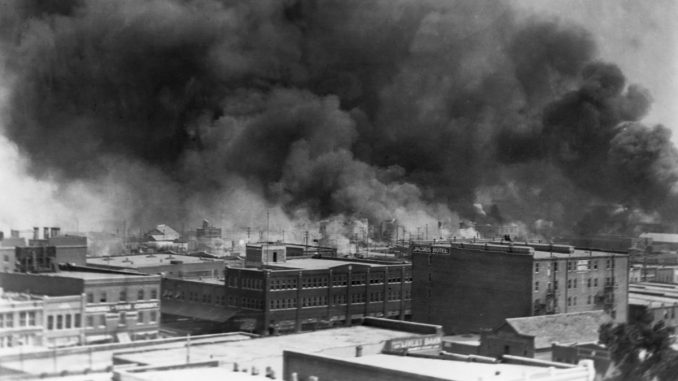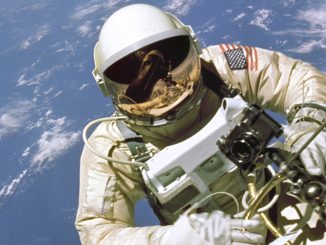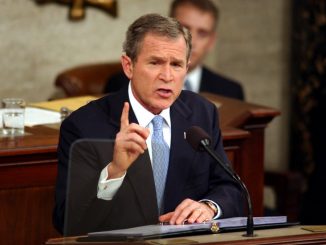
Beginning on the night of May 31, 1921, thousands of white citizens in Tulsa, Oklahoma descended on the city’s predominantly Black Greenwood District, burning homes and businesses to the ground and killing hundreds of people. Long mischaracterized as a race riot, rather than mass murder, the Tulsa Race Massacre stands as one of the worst incidents of racial violence in the nation’s history.
In the years following World War I, segregation was the law of the land, and the Ku Klux Klan was gaining ground—not only in the Jim Crow South, but across the United States. Amid that charged environment, Tulsa’s African American community was nationally recognized for its affluence. The Greenwood District, known as “Black Wall Street,” boasted more than 300 Black-owned businesses, including two movie theaters, doctors’ offices and pharmacies.
LISTEN: Blindspot: Tulsa Burning from The HISTORY® Channel and WNYC Studios
READ MORE: Tulsa’s ‘Black Wall Street’ Flourished as a Self-Contained Hub in Early 1900s
On May 30, 1921, a young Black man named Dick Rowland entered an elevator in an office building in downtown Tulsa. At some point, Rowland was alone in the elevator with its white operator, Sarah Page. It’s unclear what happened next (one common version is that Rowland stepped on Page’s foot) but Page screamed, and Rowland fled the scene. The next day, the police arrested him.
Rumors about the incident spread quickly through Tulsa’s white community, some members of which undoubtedly resented the prosperity of the Greenwood District. After a story published in the Tulsa Tribune on the afternoon of May 31 claimed that Rowland had attempted to rape Page, an angry white mob gathered in front of the courthouse, demanding that Rowland be handed over.
Seeking to prevent a lynching, a group of some 75 Black men arrived on the scene that night, some of them World War I veterans who were carrying weapons. After a white man tried to disarm a Black veteran and the gun went off, chaos broke out.
READ MORE: What Role Did Airplanes Play in the Tulsa Race Massacre?
Over the next 24 hours, thousands of white rioters poured into the Greenwood District, shooting unarmed Black citizens in the streets and burning an area of some 35 city blocks, including more than 1,200 Black-owned houses, numerous businesses, a school, a hospital and a dozen churches. Historians believe as many as 300 people were killed in the rampage, though official counts at the time were much lower.
By the time Governor James Robertson declared martial law, and National Guard troops arrived in Tulsa by noon on June 1, the Greenwood District lay in ruins. Survivors of the massacre worked to rebuild the neighborhood, but segregation remained in force in Tulsa (and the nation) and racial tensions only grew, even as the massacre and its lingering scars were left largely unacknowledged by the white community for decades to come.
In 1997, the Oklahoma state legislature created the Oklahoma Commission to Study the Tulsa Race Riot of 1921 (later renamed the Tulsa Race Massacre Commission), which studied the massacre and recommended that reparations be paid to the remaining Black survivors. City officials continue to investigate the events of May 31-June 1, 1921, and to search for unmarked graves used to bury the massacre’s many victims.
READ MORE: ‘Black Wall Street’ Before, During and After the Tulsa Race Massacre: PHOTOS






Be the first to comment